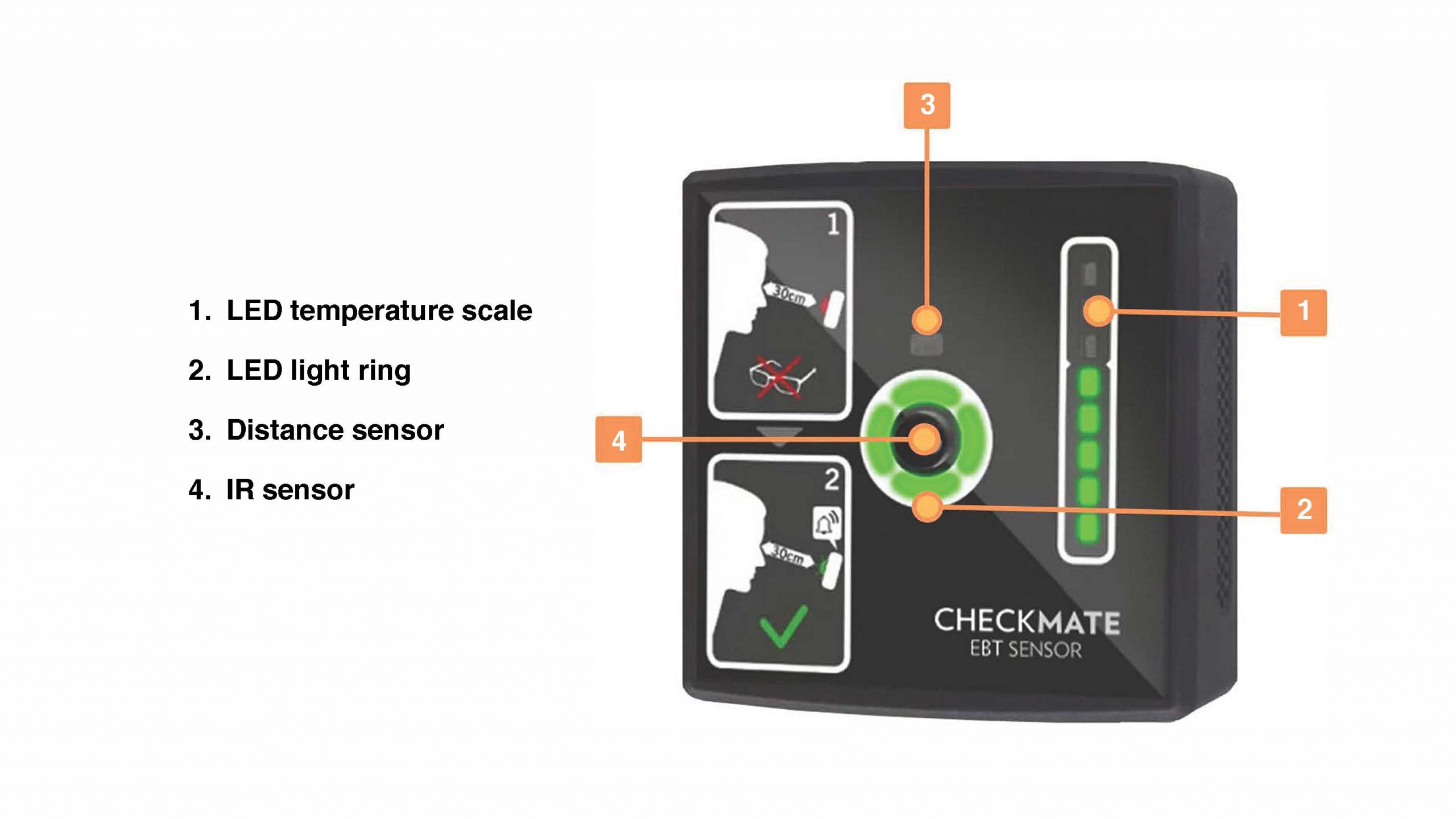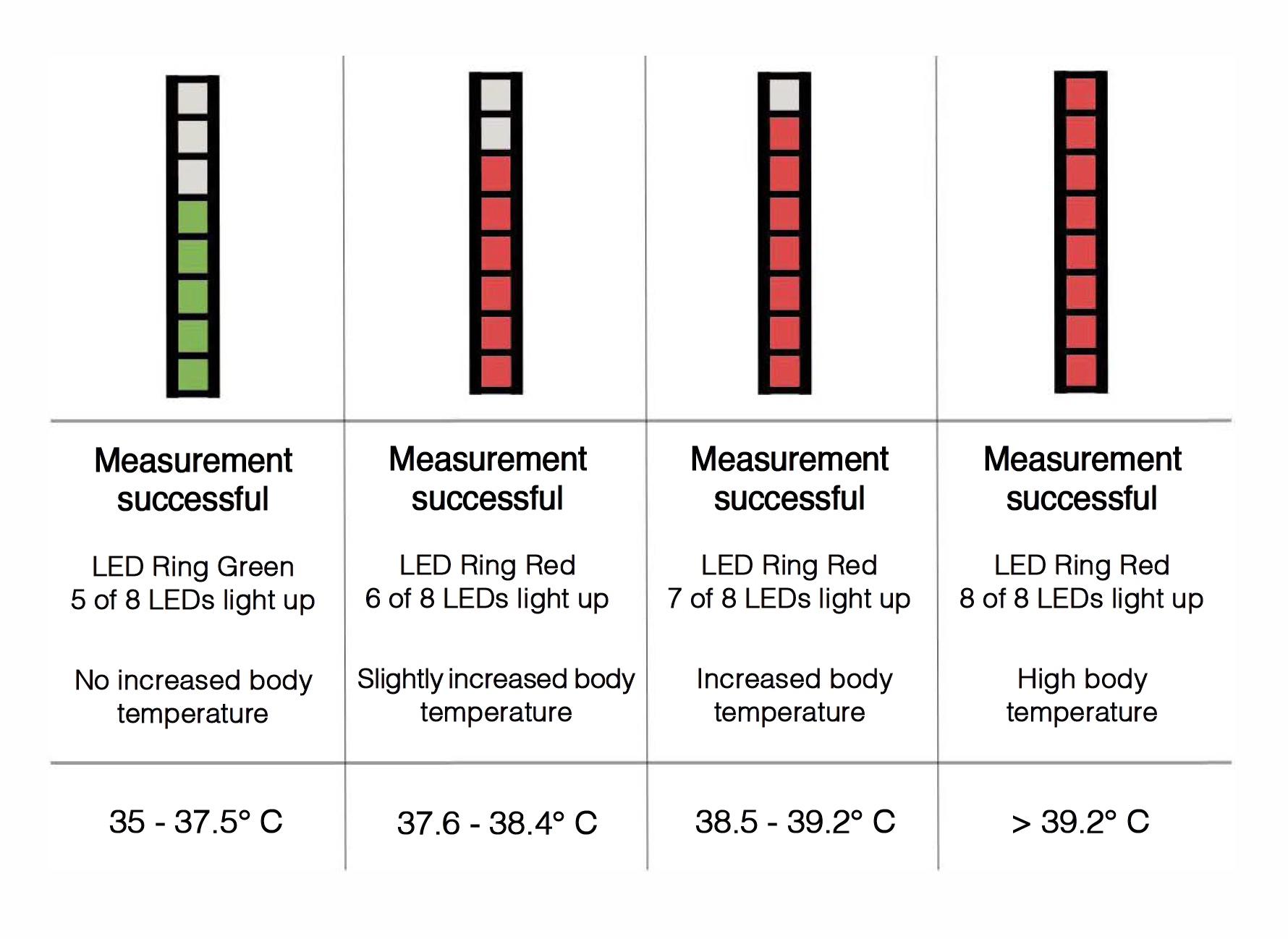Prevent Outbreaks with Accurate Temperature Screening Technology
Prevent the spread of influenza and the coronavirus at your business or the facility by screening for an elevated body temperature.
CheckMate’s EBT (Elevated Body Temperature) Sensor is a digital thermometer that can be used to screen both employees and customers for signs of fever. It is an automated, safe, and intuitive body temperature screening device that can be installed at every entry point.

Elevated Body Temperature (EBT) Measurement
While fever is a non-specific symptom, it is one of the best early-screening tools for infections such as the coronavirus. Any infection that is detected early can help to minimize the risk of other employees becoming infected. Temperature screening is an important first step in protecting your employees, customers, and business.
- Contactless body temperature scanner, provides minimized risk of contact contamination.
- Precise measurement with over 1,000 measuring points across a user’s eyes and forehead, delivering body temperature screening with +/- 0.3 degrees C accuracy.
- Reliable scans can be completed when users are wearing masks or hats, but glasses must be removed. The tampering protection feature prevents readings from being spoofed using hands, arms, or warm objects.
- Fast and efficient screening takes less than 1 second per person.
- Access control can be integrated with door access control systems, locking out personnel who have an elevated body temperature.
- No staff required to operate the contactless thermometer, as readings are initiated automatically.
- Monitoring by ProTELEC provides notifications regarding any staff with a detected fever.

24/7/365 Monitoring by ProTELEC
ProTELEC’s Emergency Monitoring Centre ensures that key management is notified if someone tests positive with a fever. All test results are recorded and can be viewed through ProTELEC CheckMate’s Client web portal. Key information is collected including body temperature, as well as temperature and humidity of the room at the time of scanning.
1. How does the device work?
The CheckMate EBT Sensor scans the inner canthus of the eye to detect a person’s core body temperature, instead of only reading skin temperature from the forehead or warmest areas of the face.Because of this, results are significantly more accurate.
The sensor is simple to set up at various heights to accommodate users with disabilities, and the interface is very simple to use. The EBT sensor will not give false low reads if someone is too far away and instead prompts the user to move closer. Additionally, scans can be completed while users are wearing masks or hats, and the sensor prevents readings from being feigned.
Below is an example showing how the face is mapped by the infrared thermometer, and how the inner canthus is identified for measurement.

2. What happens when the increased temperature is present?
When the EBT Sensor detects an elevated body temperature, the unit will indicate the positive reading by lighting-up red. The temperature reading is clearly indicated by the EBT sensor unit and can be integrated to trigger a flashing strobe. This would notify the staff member responsible for preventing the entry of possibly infected individuals. The EBT sensor can be connected todoor access control systems, and can be configured to send an alarm to the ProTELEC Monitoring Centre, triggering custom notification and reporting protocols.
3. How should employers implement an EBT sensor?
It is important to establish appropriate procedures and HR protocols for your business or facility when installing an EBT Sensor. Every organization will have different factors to consider, but some fundamental questions to address would likely include:
- What happens in the event of a positive result, who will be notified, and how will notification occur?
- Will only employees be required to use the temperature scanner or will everyone entering the premises be screened for fever?
- How will you communicate your EBT Sensor screening policy to employees and customers?
-
Are you addressing privacy concerns and legislation specific to your region of operation?
- How will the temperature information be used, stored, and disclosed?
